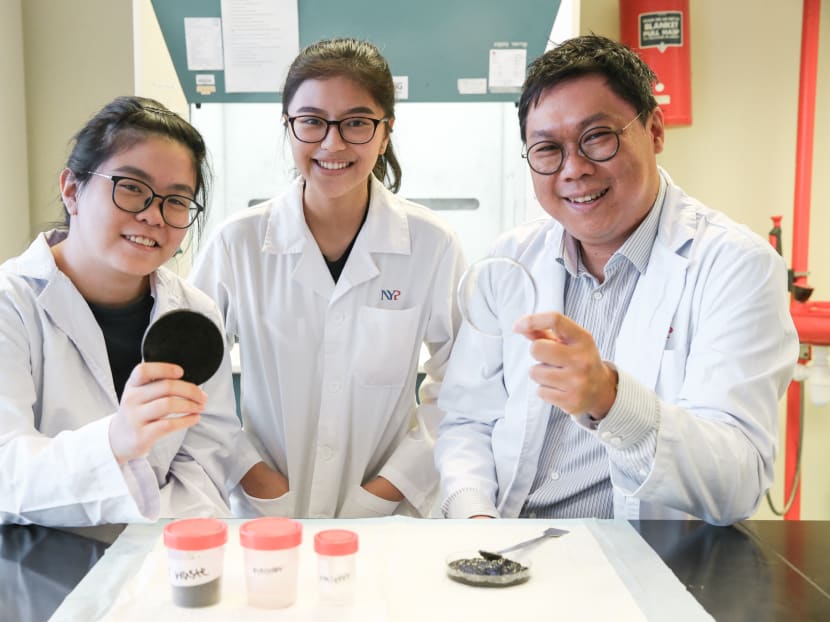New idea brewing: Researchers convert coffee waste into fire retardant coating, adhesive
SINGAPORE — Two years after they found a way to turn coffee waste into biodegradable plastic, scientists from Nanyang Polytechnic have discovered how to convert used coffee powder into a material with fire-retardant qualities.

Scientists from Nanyang Polytechnic have discovered how to convert used coffee powder into a material with fire-retardant qualities.
SINGAPORE — Two years after they found a way to turn coffee waste into biodegradable plastic, scientists from Nanyang Polytechnic have discovered how to convert used coffee powder into a material with fire-retardant qualities.
The material, a composite resin made up of coffee waste, epoxy resin and hardener, could be used as an adhesive or a coating for surfaces.
As normal epoxy melts quickly in a fire, the fire-retardant composite resin could “open doors to how epoxy is used”, said Dr Henry Leung, a senior specialist (pharmacology and toxicology) and senior lecturer at Nanyang Polytechnic’s school of chemical and life sciences.
His team is looking to submit the material for fire-retardant certification in the next six to nine months. It could then be available for commercial use in the next two to three years.
Dr Leung’s team had, in 2017, created a chemical that is used to make biodegradable plastic, by mixing water and bacteria to “Nanyang coffee” — the variant used in local coffee shops and roasted with butter and sugar, which provide natural nutrients for bacteria to grow.
But there was still residual waste at the end of the process.
“We did not really recycle and reduce (the waste) then… so we see the urgency to address this,” said Dr Leung, 42, who worked with three final-year students. “This might give coffee waste a total solution.”
Coffee waste is free, whereas epoxy is available relatively cheaply, he added. It costs about S$12 to produce a kilogramme of the coffee-epoxy composite.
His students experimented with more than 300 conditions before deriving the ideal ratio of coffee waste, epoxy resin and hardener, and the team intends to apply for a patent for the composite resin in the next one to two months.
The resulting mixture is cast into moulds in a vacuum before being left overnight in an oven to harden into “coffee bricks”, said Dr Leung.
CANTEEN ‘AUNTIES’ WERE USED TO IT
For the project, the students went around asking canteen stall-owners on campus for coffee waste.
Ms Yu Radyne Chale Castro, 20, said: “The aunties (at the stalls) were quite used to it, as students involved in the previous project did the same.”
The final-year project exposed her to material science, which is quite different from the usual chemistry projects she does.
The students’ first task was to experiment with different polymers before epoxy was chosen as a suitable composite material.
On the composite resin’s fire-retardant qualities, Ms Yu — who will continue with the project after she graduates in May — said: “I didn’t believe that it would work until (the flame test) happened.”
Dr Leung commended the students, who spent hours daily casting the “coffee bricks”.
“They moved into an area where they might not even get results,” he said. “These students are the biggest heroes of this project.”






